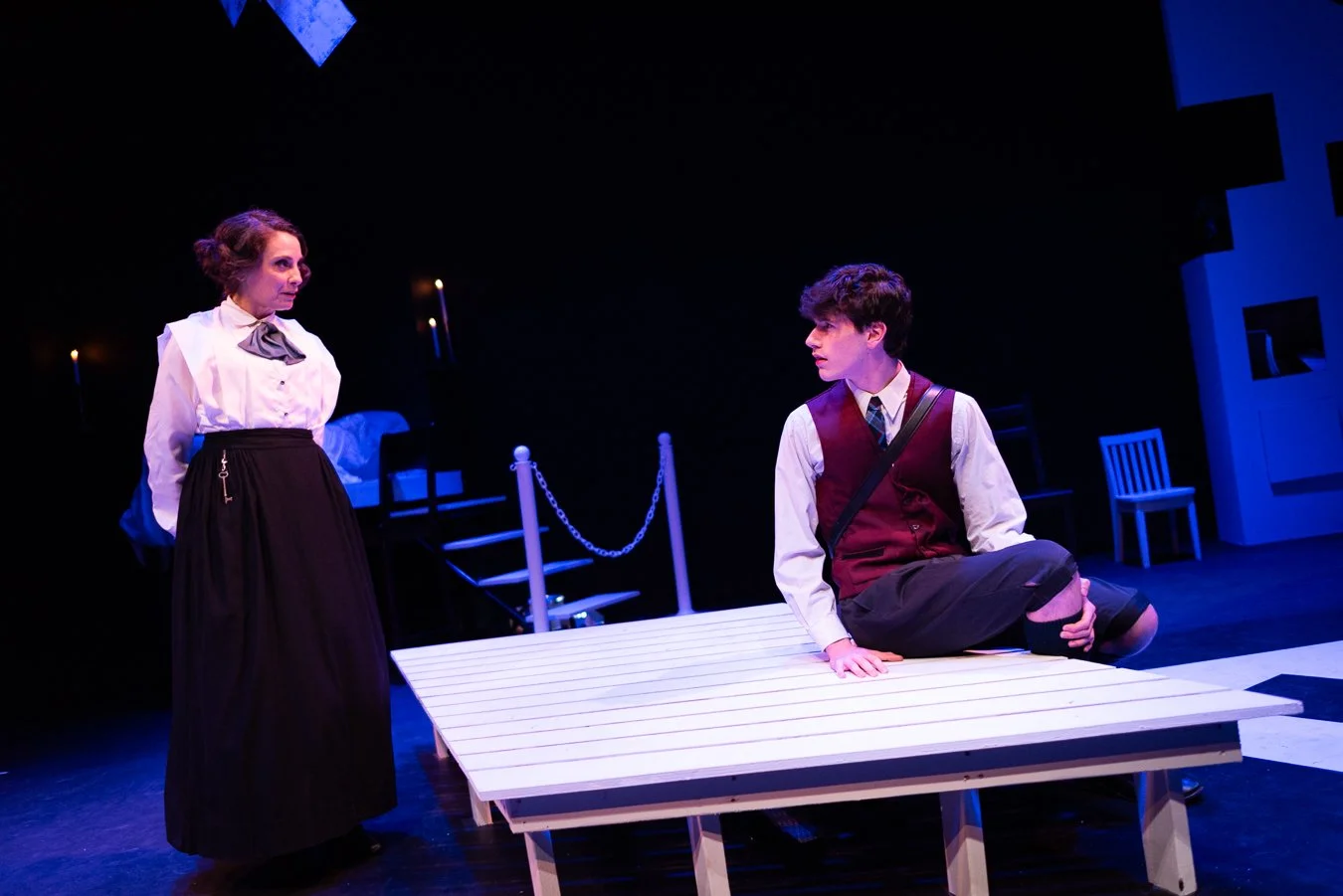The Turn of the Screw
Creative Cauldron
Photo credits: William T. Gallagher Production LLC
High on a hill sits the House of Bly: a manor with two abandoned children, halls teeming with ghosts, and more rooms than keys to unlock them.
At Creative Cauldron’s revival of their 2015 original musical “Turn of the Screw,” the House of Bly came to life through the eyes of an unsuspecting Governess. This psychological horror was a twisted maze of chilling characters and frightening moments, with an unnerving ending of ambiguity.
It was like the universal experience of solving a puzzle, only to realize one of the pieces has gone missing. Except in this case, it wasn’t just one piece; half of the puzzle was nowhere to be found… and maybe wasn’t even a puzzle to begin with?
The Turn of the Screw
Written by Henry James in 1898, the gothic novella “The Turn of the Screw” has become a classic ghost story. It sparked a number of film adaptations (namely “The Innocents” in 1961 and “The Nightcomers” in 1972), as well as a play adaptation in 1950 that was taken to Broadway. Now, composer Matt Conner and bookwriter/lyricist Stephen Gregory Smith have put the tale to a musical score.
Governess Miss Giddens has just taken on a new charge at a hauntingly-empty estate. Upon meeting young Flora and housekeeper Mrs. Grose, Miss Giddens begins to notice ghostly appearances of the estate’s former valet and governess. The unnerving occurrences only escalate when Flora’s brother Miles returns from boarding school. Before long, Miss Giddens feels trapped in a twisted game set by the children, and the screw continues to turn while a perplexing tale unravels from its threads.
All that’s missing is the spooky campfire and the toasted marshmallows.
This Production
Director Matt Conner expertly crafted the gripping nature of a ghost story. From dissonant echoes of the ghosts’ cries to urgent, overlapping melodies, Conner’s original music elevated the unsettling atmosphere. The live pit (Paige Rammelkamp, Mary Thulson, and Tim Thulson) flawlessly brought this sinister score to life.
The set itself, under the clever design of Margie Jervis, was reminiscent of an unsolved puzzle. The white walls of the manor were strewn with square-shaped holes, and matching tiles littered the floor. The entire house was black and white, with large chess pieces occupying the shelves. A life-sized game, if you will--with Miss Giddens and the children as its pawns.
In a skillful reprise of her role from the 2015 production, Susan Derry stepped back into the motherly shoes of Miss Giddens. Her genuine care and fierce protection of the children was palpable, which made for a chilling juxtaposition as her fear escalated and the children became wary of her madness. Derry’s gorgeous soprano was riddled with emotion while she wrote letters about her experiences; each one more frightened than the last, and only calmed by Karen Kelleher’s blind assurance as housekeeper Mrs. Grose. Marcy Ledvinka and Christian Montgomery, as Jessel and Peter Quint, completely transformed from innocent young lovers to disturbing apparitions. Their fixed gazes filled the stage with an eerie air as encounters with Derry continued to escalate.
Bobby Smith, meanwhile, brought charm to the role of the utterly disintered Uncle. He approached Derry with an almost comical insistence not to disturb him, and offered a contract on the spot at her agreement. A light-hearted start, and yet a foreshadow to the perturbing tale to come.
In the role of Miles, John Poncy examined the audience with a messenger bag and a calculated gaze; the perfect portrayal of a troublesome schoolboy. He often spoke with a lilt of mischief and a crooked grin, yet expertly displayed a childlike vulnerability opposite Miss Giddens. Jane Tuss was positively precious in the role of Flora. Tuss’s bright-eyed innocence was touching, and pulled at the heartstrings of both Miss Giddens and the audience in the wake of the manor’s tragedy. Tuss and Poncy had an adorable sibling dynamic: whether they waltzed across the stage or whispered secrets in each other’s ears, it was clear the two were inseparable despite the twists and turns.
Who is it For?
I’m a fan of mind-bending tales, so if you’re a similar lover of psychological thrillers or gothic horror, this show will be right up your alley. “The Turn of the Screw” is a show that’s coated in a layer of ambiguity; perhaps one of the most intriguing parts is the variety of audience interpretations taken away from it.
By the end of it, I couldn’t help but wonder: was the puzzle complete? Did a piece go missing when I flipped the table trying to solve it? As far as I’m concerned, that was the true mastermind behind the design.
Though there are fantastic teenage and child actors involved in this production, I’m inclined to agree with Creative Cauldron and recommend this show for ages 13+. Themes of murder, suicide, and sexual abuse are central to the plot, though not explicitly shown (minus a brief depiction of blood).
“The Turn of the Screw” runs at Creative Cauldron until October 26, so take advantage of spooky season (AND student discounts!) to grab tickets to this haunting production while you can.
Visit creativecauldron.org for tickets and more information.

